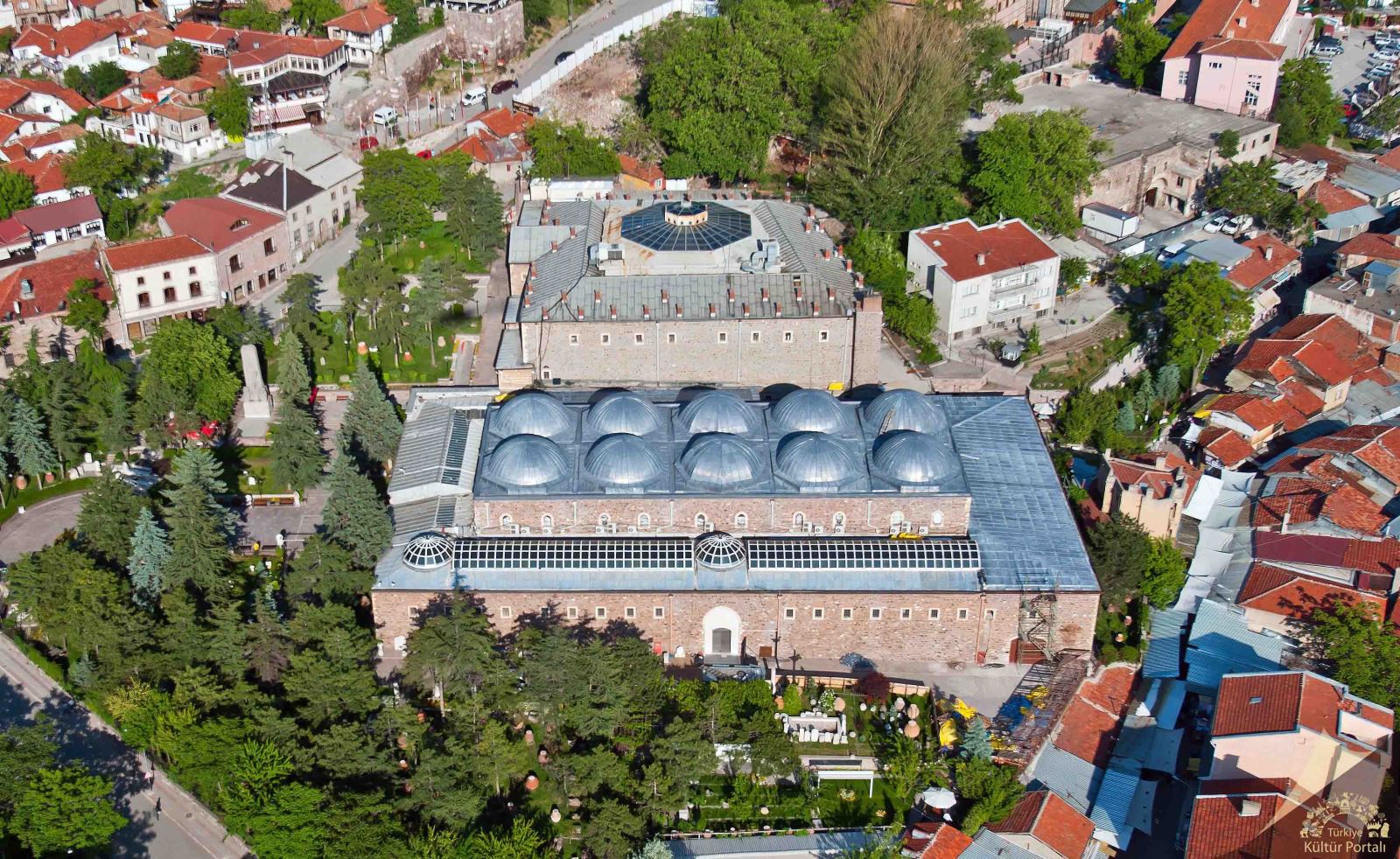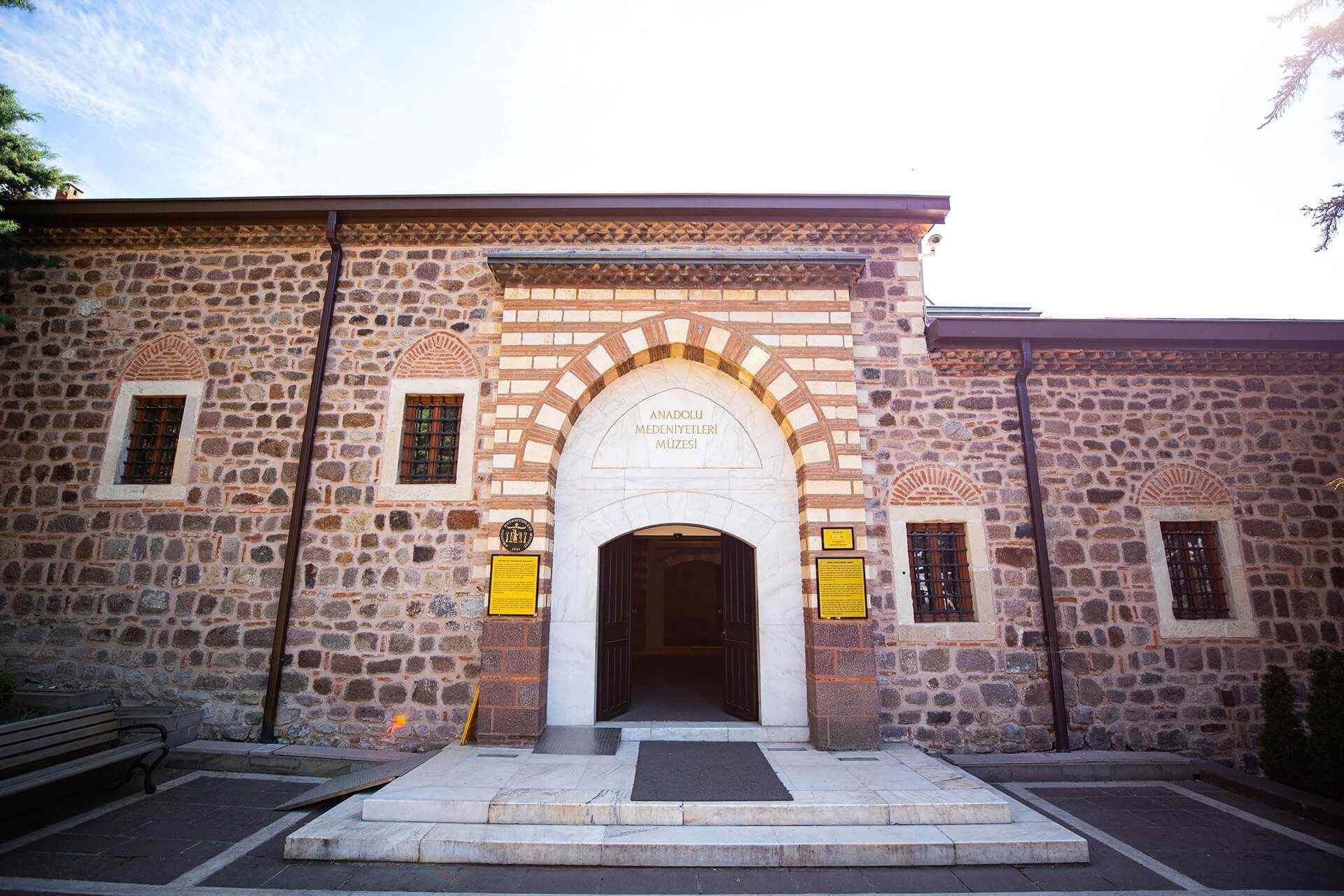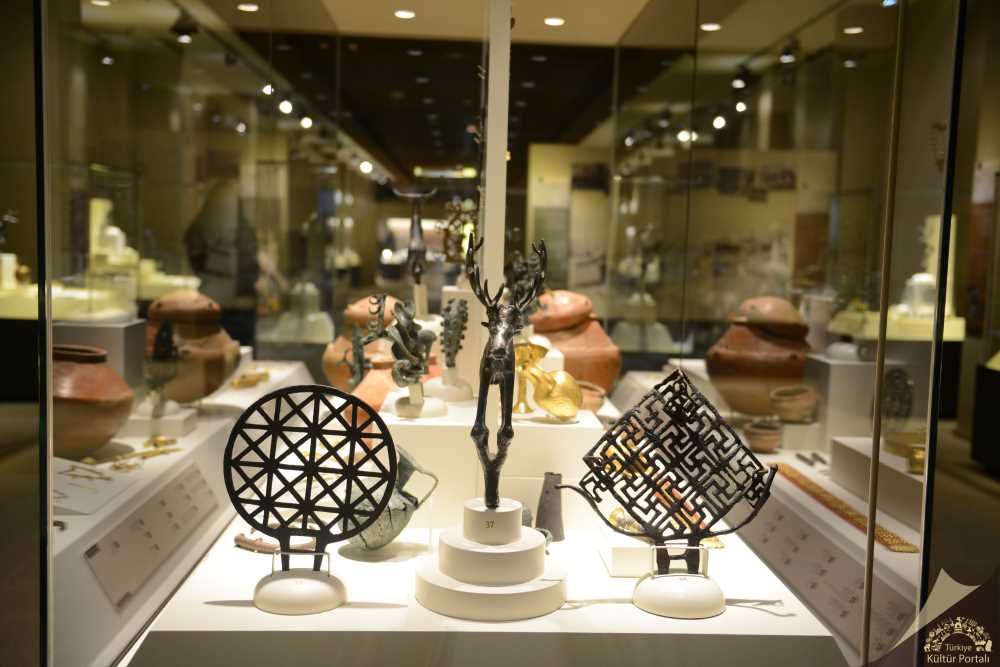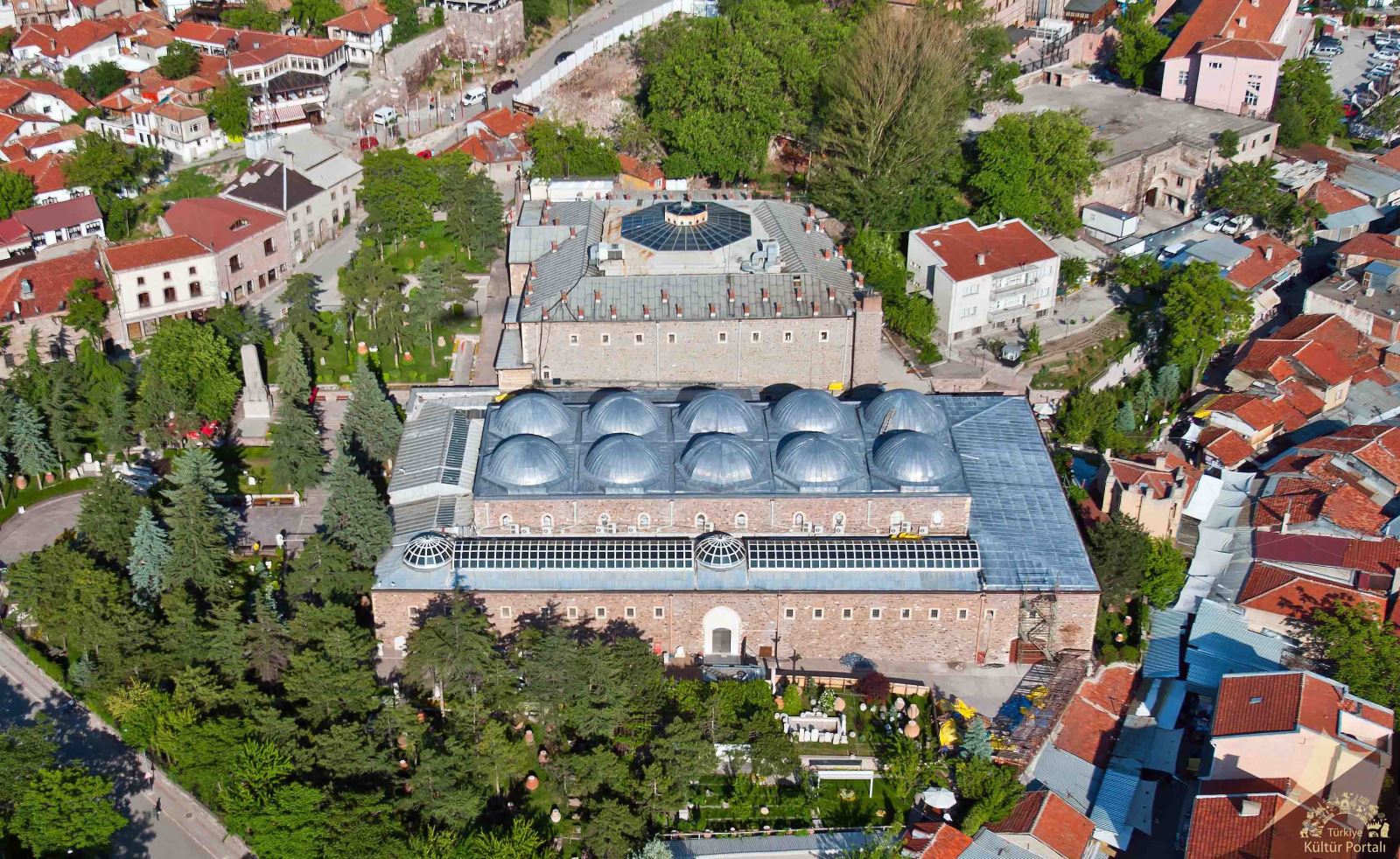Imagine two magnificent Ottoman structures frozen in time, right in the heart of Ankara, nestled beside the ancient citadel walls: the Kurşunlu Han and the Mahmut Paşa Bedesteni. Have you ever wondered what awaits you behind these centuries-old walls? This is more than just a building filled with stones and artifacts; it's a sacred space where Mustafa Kemal Atatürk's vision of establishing a Hittite Museum to showcase Anatolia's riches came to life, a place that has witnessed the birth of civilizations. If you're ready to embark on an unforgettable journey into the depths of history with a list of things to do at the Museum of Anatolian Civilizations, you've come to the right place. Let's explore this unique museum step by step.
See unique artifacts from the Hittite and Phrygian periods
The moment you step through the museum's doors, you'll feel as if you've entered a time tunnel that transports you back thousands of years. This is a treasure chest filled with objects that whisper the secrets of Anatolia's ancient peoples, the Hittites and the Phrygians, each telling its own story.

The Hittites: A World of Empire-Builders and Gods
The Hittite section introduces you to the superpower of the 2nd millennium BCE. The artifacts in the display cases prove that this civilization was not just a warrior nation but also possessed a deep belief system, a complex bureaucracy, and a sophisticated artistic taste. The first thing that will undoubtedly catch your eye is the Hittite Sun Disc, found in Alacahöyük, which has become a symbol of Hittite art. These bronze discs, used by priests in religious ceremonies, symbolize the universe and the cosmic order.
A little further on, you'll encounter another masterpiece that will mesmerize you: the İnandık Vase. This nearly 3,600-year-old terracotta vase depicts a sacred wedding ceremony through its reliefs, almost like a film strip. These artifacts reveal the Hittites' efforts not only to rule an empire but also to understand the universe and express their beliefs through art. The thousands of cuneiform tablets in this section form the basis of the empire's administrative and legal power, and some of these tablets are inscribed on the
UNESCO Memory of the World Register.
The Phrygians: Master Woodworkers of the Legendary King Midas
When you leave the magnificent world of the Hittites and enter the mysterious atmosphere of the Phrygians, a completely different surprise awaits you. We often think of history as being made of stone and metal, but the Phrygians completely shatter this perception. The wooden artifacts, miraculously preserved to this day and unearthed from the Midas Mound in Gordion (likely belonging to Gordias, King Midas's father), prove what master craftsmen the Phrygians were.
The 2,700-year-old inlaid wooden table, in particular, showcases the aesthetic understanding and the pinnacle of woodworking of that era. Alongside this table, serving stands and stools from the same tomb invite you to a royal feast. Statues dedicated to the Phrygian mother goddess
Matar (Cybele) and hundreds of ornate fibulae (brooches) used to fasten their garments complete the rich cultural tapestry of this civilization. These artifacts offer a chance to form a warm, organic connection with history, moving beyond the coldness of stone statues and giving you the feeling of truly touching the past.
Examine the tablet of the Treaty of Kadesh, the first written treaty in history
One of the most intriguing sections of the museum is undoubtedly related to the legendary text that initiated the history of world diplomacy. The Treaty of Kadesh not only ended a war between two empires but also set the rules for international relations thousands of years ago.

The Treaty of Kadesh: The Text That Invented Diplomacy
Signed in 1259 BCE between the two superpowers of the era, the Hittite Empire and Egypt, the Treaty of Kadesh is the first known written peace treaty in history. This text, signed between Hittite King Hattusili III and Egyptian Pharaoh Ramesses II after long and bloody struggles over Syrian territory, was based on the principle of equality. The treaty included articles such as non-aggression, mutual military aid, and the extradition of political refugees, which form the basis of modern diplomacy today. The importance of this text is so great that an enlarged copy adorns the wall of the United Nations Headquarters in New York. If you'd like to explore ancient cities like the Hittite capital Hattusa, you can check out our article on ancient sites around Ankara.
Ankara's Hidden Treasure: The Unique Bronze Tablet
Here's a local guide's secret for you: the famous clay tablet copies of the historic Treaty of Kadesh, found during the Boğazköy (Hattusa) excavations, are displayed among the most valuable artifacts at the Istanbul Archaeology Museums. So, what awaits you in Ankara? A much rarer and more special piece: the Hattusa Bronze Tablet. This artifact holds the distinction of being the only bronze treaty text from the Hittite period ever found in Anatolia. This treaty, signed between Hittite King Tuthaliya IV and his cousin Kurunta, concerns a land settlement and provides invaluable information about Hittite geography, administrative structure, and inter-royal relations. This means that in Ankara, you have the chance to see up close a diplomatic document that carries the spirit of Kadesh but is far more unique.
Understand why the museum's impressive atmosphere earned it the European Museum of the Year award
What makes the Museum of Anatolian Civilizations special is not just its priceless collection, but the historical fabric that houses it. Unlike a modern, cold building, this museum breathes within walls that have a soul, offering visitors a unique experience.

The Talking Walls: Kurşunlu Han and Mahmut Paşa Bedesteni
The museum is housed in two magnificent structures built in the 15th century by viziers of the Fatih Sultan Mehmed era. The
Kurşunlu Han, with its central courtyard, two-story rooms, and a massive stable that once sheltered caravan horses, is a typical Ottoman caravanserai. The
Mahmut Paşa Bedesteni, with its 10 domes and vaulted shops, was once a bustling covered market where valuable Ankara angora wool fabric was traded. Abandoned after a fire in 1881, these structures were reborn as a museum through a meticulous 30-year restoration that began in 1938.
More Than an Award: The Perfect Harmony of Atmosphere and Narrative
So, why was this museum chosen as the European Museum of the Year in 1997, standing out from 68 other museums?. The criteria for this prestigious award include unique atmosphere, imaginative presentation, and social responsibility. The Museum of Anatolian Civilizations more than meets all these criteria. Walking through a chronological exhibition that starts from the Paleolithic Age and extends to the Ottoman period, all within the stone walls of a 550-year-old inn, offers an authentic atmosphere you can't experience anywhere else. Here, the buildings are not passive containers for the artifacts but are part of the narrative itself. The layers of history come to life both in the objects in the display cases and on the stone floors you walk on. It is this perfect integrity that made the museum the best in Europe.
While You're Here: Other Treasures Around the Citadel
After completing your journey through time at the Museum of Anatolian Civilizations, we highly recommend continuing your tour in this historic area. You can climb up to Ankara Castle, located just above the museum, to enjoy a panoramic view of the city and get lost in its narrow streets. Also within walking distance, you can visit the
Rahmi M. Koç Museum, housed in historic inns like the Çengelhan and Safranhan, for a journey into the history of industry and technology. In the evening, you can check the schedule of the
Erimtan Archaeology and Arts Museum to catch a classical music concert. If you're looking for more ideas to get lost in Ankara's historical fabric, be sure to check out our comprehensive Ankara travel guide.
Bibliography: For more official information about the Museum of Anatolian Civilizations, you can visit the relevant page of the T.R. Ministry of Culture and Tourism: Ankara - Museum of Anatolian Civilizations.
Frequently Asked Questions (FAQ)
Where is the Museum of Anatolian Civilizations, what is the entrance fee, and what are its opening hours?
The museum is located in Ankara's Altındağ district, just below Ankara Castle, at Gözcü Sokak No:2. Visiting hours vary between summer and winter seasons but it generally opens at 08:30 and can be visited until 19:00 in the summer. For the most accurate information on current entrance fees and Museum Pass (MüzeKart) validity, we recommend checking the museum's official website before your visit.
How can I get to the museum? What are the public transport options?
Getting to the museum is quite easy. If you are using the metro, you can get off at the Ulus station on the Kızılay-Batıkent line and reach the museum with a 10-15 minute walk. There are also numerous city bus lines that pass through Ulus Square. Just follow the signs for Ankara Castle (Ankara Kalesi).
How long does a visit to the museum typically take, and is photography allowed inside?
It is recommended to set aside at least 2-3 hours to properly explore the museum's rich collection and enjoy the atmosphere. Photography without flash is generally permitted inside the museum, provided it does not harm the artifacts. However, keep in mind that there may be special restrictions for some temporary exhibitions.


 English
English Türkçe
Türkçe